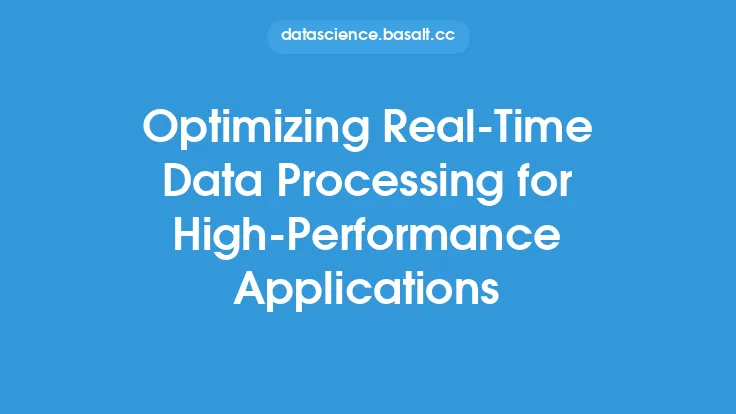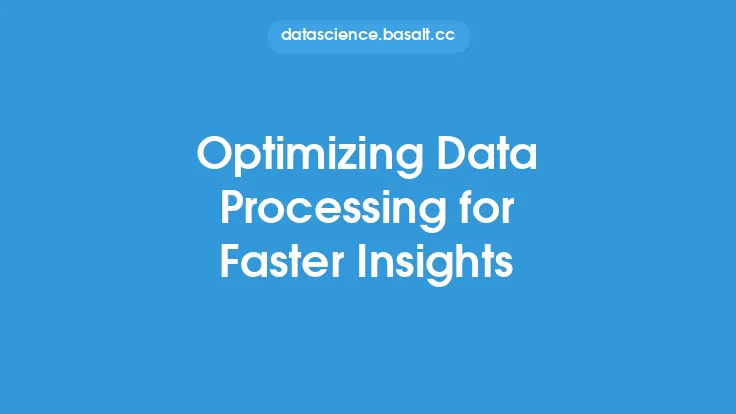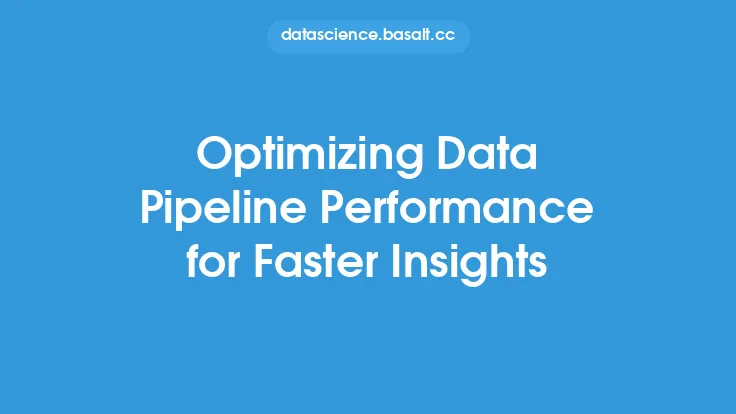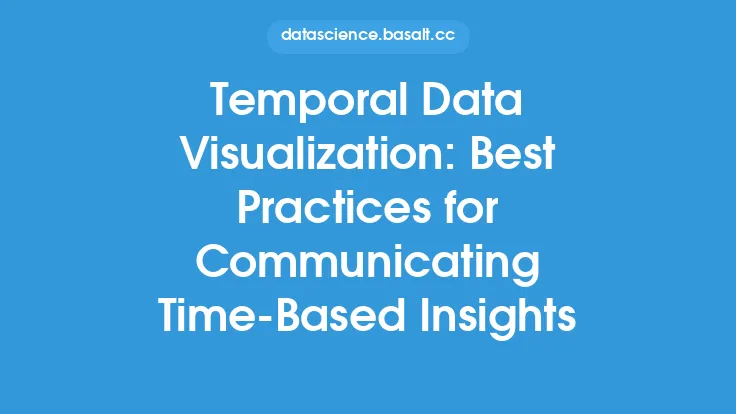The process of data ingestion is a critical component of any data engineering pipeline, as it enables organizations to collect, process, and analyze large volumes of data from various sources. However, traditional data ingestion methods can be time-consuming, labor-intensive, and prone to errors, which can hinder an organization's ability to gain insights from their data in a timely manner. Streamlining data ingestion is essential to reduce the time-to-insight, which refers to the time it takes for an organization to collect, process, and analyze data to gain meaningful insights.
Introduction to Streamlining Data Ingestion
Streamlining data ingestion involves optimizing the data ingestion process to reduce latency, increase throughput, and improve data quality. This can be achieved by implementing efficient data ingestion architectures, leveraging scalable data processing technologies, and automating data ingestion workflows. By streamlining data ingestion, organizations can reduce the time-to-insight, enabling them to make data-driven decisions faster and respond to changing market conditions more effectively.
Benefits of Streamlining Data Ingestion
Streamlining data ingestion offers several benefits, including improved data freshness, increased data quality, and enhanced scalability. By reducing the latency associated with traditional data ingestion methods, organizations can ensure that their data is fresh and up-to-date, which is critical for real-time analytics and decision-making. Additionally, streamlining data ingestion can help improve data quality by reducing errors and inconsistencies, which can occur when data is manually ingested or processed. Scalability is another key benefit of streamlining data ingestion, as it enables organizations to handle large volumes of data from various sources without compromising performance.
Data Ingestion Architectures for Streamlining
There are several data ingestion architectures that can be used to streamline data ingestion, including batch processing, real-time processing, and lambda architectures. Batch processing involves processing data in batches, which can be time-consuming and may not be suitable for real-time analytics. Real-time processing, on the other hand, involves processing data as it is generated, which can provide faster time-to-insight. Lambda architectures combine batch and real-time processing to provide a scalable and fault-tolerant data ingestion pipeline. The choice of data ingestion architecture depends on the specific use case, data volume, and performance requirements.
Scalable Data Processing Technologies
Scalable data processing technologies, such as Apache Kafka, Apache Storm, and Apache Flink, can be used to streamline data ingestion. These technologies provide high-throughput, low-latency, and fault-tolerant data processing capabilities, which are essential for handling large volumes of data from various sources. Apache Kafka, for example, is a distributed streaming platform that can handle high-throughput and provides low-latency data processing. Apache Storm and Apache Flink are real-time processing engines that can handle high-volume and high-velocity data streams.
Automating Data Ingestion Workflows
Automating data ingestion workflows is critical to streamlining data ingestion. Automation can help reduce errors, improve data quality, and increase efficiency. There are several tools and technologies that can be used to automate data ingestion workflows, including Apache Airflow, Apache NiFi, and AWS Glue. These tools provide a scalable and flexible way to automate data ingestion workflows, which can help reduce the time-to-insight.
Best Practices for Streamlining Data Ingestion
There are several best practices that can be followed to streamline data ingestion, including designing a scalable data ingestion architecture, leveraging scalable data processing technologies, and automating data ingestion workflows. Additionally, it is essential to monitor and optimize data ingestion pipelines regularly to ensure optimal performance. Data ingestion pipelines should also be designed to handle data quality issues, such as data inconsistencies and errors, which can occur during the data ingestion process.
Common Challenges and Solutions
Streamlining data ingestion can be challenging, especially when dealing with large volumes of data from various sources. Common challenges include handling data quality issues, ensuring scalability, and providing low-latency data processing. To overcome these challenges, organizations can leverage scalable data processing technologies, automate data ingestion workflows, and design a scalable data ingestion architecture. Additionally, organizations can implement data quality checks and monitoring tools to ensure data quality and detect issues early.
Future of Streamlining Data Ingestion
The future of streamlining data ingestion is exciting, with emerging technologies like cloud-native data ingestion, serverless data processing, and artificial intelligence (AI) and machine learning (ML) providing new opportunities for optimizing data ingestion pipelines. Cloud-native data ingestion, for example, provides a scalable and flexible way to ingest data from various sources, while serverless data processing provides a cost-effective and efficient way to process data. AI and ML can be used to optimize data ingestion pipelines, detect data quality issues, and provide predictive analytics capabilities.
Conclusion
Streamlining data ingestion is critical to reducing the time-to-insight, which is essential for organizations to make data-driven decisions faster and respond to changing market conditions more effectively. By implementing efficient data ingestion architectures, leveraging scalable data processing technologies, and automating data ingestion workflows, organizations can streamline data ingestion and improve data quality, scalability, and performance. As data volumes continue to grow, streamlining data ingestion will become increasingly important, and emerging technologies like cloud-native data ingestion, serverless data processing, and AI and ML will play a critical role in optimizing data ingestion pipelines.





